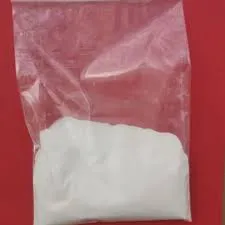The Role of Calcium Carbonate as a Filler in Plastics
Calcium carbonate (CaCO3) is a white, odorless powder that is widely used as a filler in various plastics. With an abundance of natural sources, such as limestone, chalk, and marble, it serves as an economically viable option for enhancing the properties of plastic materials. The increasing demand for lightweight, cost-effective, and environmentally friendly materials in the plastic industry has boosted the popularity of calcium carbonate fillers. This article explores the advantages, applications, and future prospects of calcium carbonate in plastic manufacturing.
Benefits of Calcium Carbonate Fillers
1. Cost Effectiveness One of the primary benefits of using calcium carbonate as a filler is its cost efficiency. Compared to other filler materials, CaCO3 is relatively inexpensive. This makes it an attractive choice for manufacturers looking to reduce production costs without compromising the quality of their products.
2. Improved Mechanical Properties Incorporating CaCO3 into plastic materials significantly enhances their mechanical properties, including tensile strength, impact resistance, and stiffness. These improvements enable manufacturers to produce stronger and more durable products while using less polymer, which in turn reduces material costs.
3. Reduced Density Calcium carbonate fillers help lower the overall density of plastics, making them lighter. This is particularly beneficial in industries like automotive and aerospace, where weight reduction translates to improved fuel efficiency and performance.
4. Environmental Benefits As a natural material, calcium carbonate is non-toxic and environmentally friendly. Its use in the plastics industry helps reduce the carbon footprint associated with producing and processing synthetic fillers. Additionally, many manufacturers are incorporating recycled calcium carbonate, further promoting sustainability.
5. Enhanced Processability The use of calcium carbonate fillers can improve the processing characteristics of plastics. They can enhance the flow properties during molding and extrusion, allowing for smoother processing and easier handling in manufacturing operations.
Applications of Calcium Carbonate in Plastics
caco3 filler plastic

Calcium carbonate fillers find applications in a wide range of plastic products across various industries
1. Packaging Materials In the packaging industry, calcium carbonate is commonly used in polyethylene, polypropylene, and polyvinyl chloride (PVC) films. It adds bulk, reduces production costs, and provides sufficient stiffness, making these materials suitable for various packaging needs.
2. Automotive Parts The automotive industry utilizes calcium carbonate-filled plastics for producing interior parts, dashboards, and bumpers. The enhanced mechanical properties and reduced weight contribute to vehicle safety and performance.
3. Building and Construction In construction, calcium carbonate is employed in PVC and other polymer-based materials for pipes, fittings, and siding. It helps to increase strength while lowering material costs, making it a preferred choice for construction products.
4. Consumer Goods A variety of consumer products, including toys, household items, and electronic casings, often incorporate calcium carbonate fillers. The filler improves the quality and durability of these products while keeping manufacturing costs down.
5. Medical Devices In the medical field, calcium carbonate-filled plastics are used in various applications, including medical device housings and packaging. The biocompatibility of calcium carbonate makes it a suitable filler for such applications.
Future Perspectives
As regulatory bodies continue to emphasize sustainability in manufacturing processes, the demand for eco-friendly fillers like calcium carbonate is likely to grow. Advances in processing technologies and material science may lead to expanded applications and improved formulations that maximize the benefits of calcium carbonate fillers. Additionally, the trend towards recycling and the use of secondary raw materials can enhance the sustainability profile of calcium carbonate in plastic production.
In conclusion, calcium carbonate serves as a versatile and beneficial filler in the plastic industry. Its cost-effectiveness, improved mechanical properties, reduced density, environmental advantages, and enhanced processability make it an integral component in the manufacture of a wide range of plastic products. As the industry evolves, the potential for calcium carbonate to contribute to sustainable practices and innovative applications will continue to expand, solidifying its role as a crucial material in modern plastic manufacturing.

